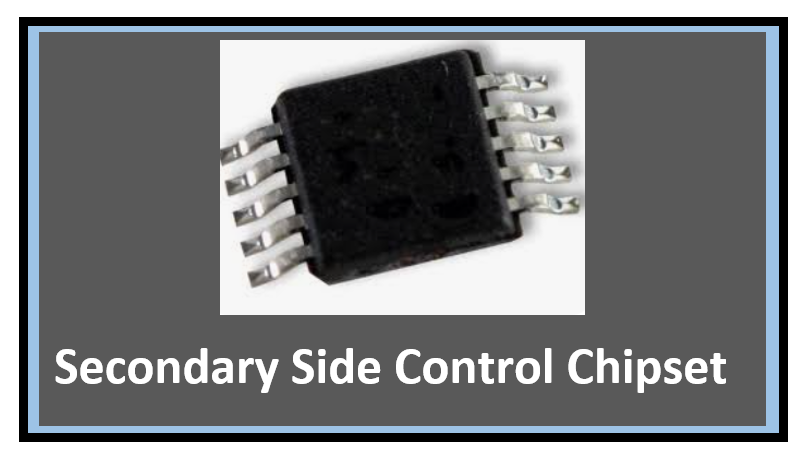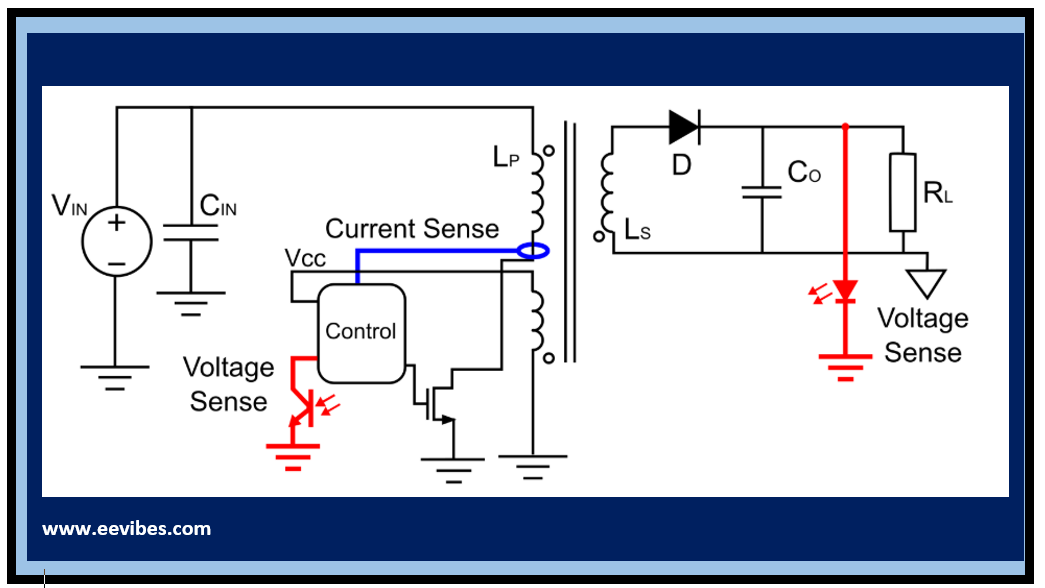
Secondary-side control chipsets represent a critical advancement in power electronics, particularly within isolated power converters such as flyback, forward, and LLC resonant topologies. These chipsets are integrated circuits (ICs) designed to manage and regulate power on the secondary side of a transformer, which is the output side isolated from the input or primary side.
Unlike traditional primary-side regulation, where control is handled entirely from the input, secondary-side control directly senses and adjusts the output voltage and current, enabling more precise regulation and higher efficiency.
This approach often incorporates synchronous rectification (SR), where MOSFETs replace diodes to minimize conduction losses, and supports advanced protocols like USB Power Delivery (PD). By placing the control intelligence closer to the load, these chipsets facilitate compact, high-power designs suitable for modern consumer electronics.
Secondary Side Control Chipset and Secondary Side Regulation
To understand the role of secondary-side control chipsets, it is essential to differentiate them from primary-side regulation methods. In primary-side regulation (PSR), the controller samples the output voltage indirectly through an auxiliary winding on the transformer, relying on the transformer’s turn ratio for feedback without crossing the isolation barrier.
This results in simpler, lower-cost designs with reduced component counts and lower standby power, but it suffers from slower transient responses and poorer accuracy, especially in multi-output converters where load variations can disrupt regulation.
In contrast, secondary-side regulation (SSR) directly monitors the output, typically using an optocoupler or pulse-edge transformer (PET) to send feedback signals back to the primary side while maintaining isolation. This direct sensing allows for constant monitoring, faster load transient responses, and superior cross-regulation in applications with multiple outputs, though it may increase complexity and cost due to additional isolation components.

Architecture of Secondary-Side Control Chipsets
The architecture of secondary-side control chipsets typically involves a digital or mixed-signal controller that measures the output voltage/current, processes the error signal, and generates control commands. These commands must be transferred back to the primary side, since the switching element (like a MOSFET) is usually placed there. To achieve this, techniques such as digital isolators, pulse transformers, or capacitive isolation are used. This bi-directional communication allows for precise pulse-width modulation (PWM) control and ensures that the primary switch operates according to the exact demands of the secondary side.
From a system design perspective, secondary-side controllers simplify compensation networks and improve dynamic load response. For instance, in server power supplies where sudden load changes occur due to processor activity, fast transient regulation is essential to maintain stable operation. A secondary-side chipset can adjust duty cycles nearly instantaneously because it has direct access to the actual output conditions. This is a clear advantage over primary-side control, which relies on slower indirect feedback mechanisms.
Advantage of Secondary-Side Control Chipsets
The advantages of secondary-side control chipsets are particularly pronounced in efficiency and performance. By enabling synchronous rectification, these chipsets replace inefficient diodes with actively controlled MOSFETs, reducing power losses and allowing for higher power densities in smaller form factors. For instance, they can achieve better transient load responses without the bandwidth limitations of optocouplers in primary-side setups, leading to more stable output under varying conditions. Additionally, secondary-side control eliminates the need for signal transformers in some designs by sensing MOSFET drain-to-source voltages directly, integrating seamlessly with no-optocoupler feedback systems in boundary or critical conduction modes. This not only boosts overall system efficiency but also enhances reliability by placing control nearer to the load, minimizing errors from transformer tolerances or line variation.
Applications of Secondary-Side Control Chipsets
Applications for secondary-side control chipsets have expanded rapidly with the rise of fast-charging technologies. They are integral to USB-C Power Delivery (PD) adapters, chargers, and travel adapters, where high efficiency and programmability are paramount. In automotive and consumer electronics, these chipsets support protocols like QC5.0, Apple Charging, and AFC, enabling outputs up to extended power ranges (EPR) of 28V or more. For instance, in switched-mode power supplies (SMPS), they facilitate compact designs for laptops, smartphones, and IoT devices, while in resonant converters, they enhance efficiency through secondary-side synchronous LLC control. Their versatility extends to high-current, low-voltage scenarios, making them suitable for everything from wall adapters to embedded power modules in industrial equipment.
Market Trend
Looking at the market trend, the adoption of secondary-side control is expanding rapidly. Semiconductor companies are increasingly integrating these controllers with digital power management functions, offering complete solutions that support telemetry, monitoring, and adaptive control. With the rise of AI workloads, 5G networks, and electric vehicles, demand for highly efficient, compact, and intelligent power systems is growing, further pushing the adoption of secondary-side control solutions.
In conclusion, the secondary-side control chipset represents a significant step forward in power supply design. By offering direct feedback from the output, improved efficiency, faster response times, and better reliability, it addresses the limitations of traditional primary-side regulation. As efficiency standards become stricter and electronic systems demand greater performance, the role of these chipsets will only continue to grow, shaping the future of power conversion technology.